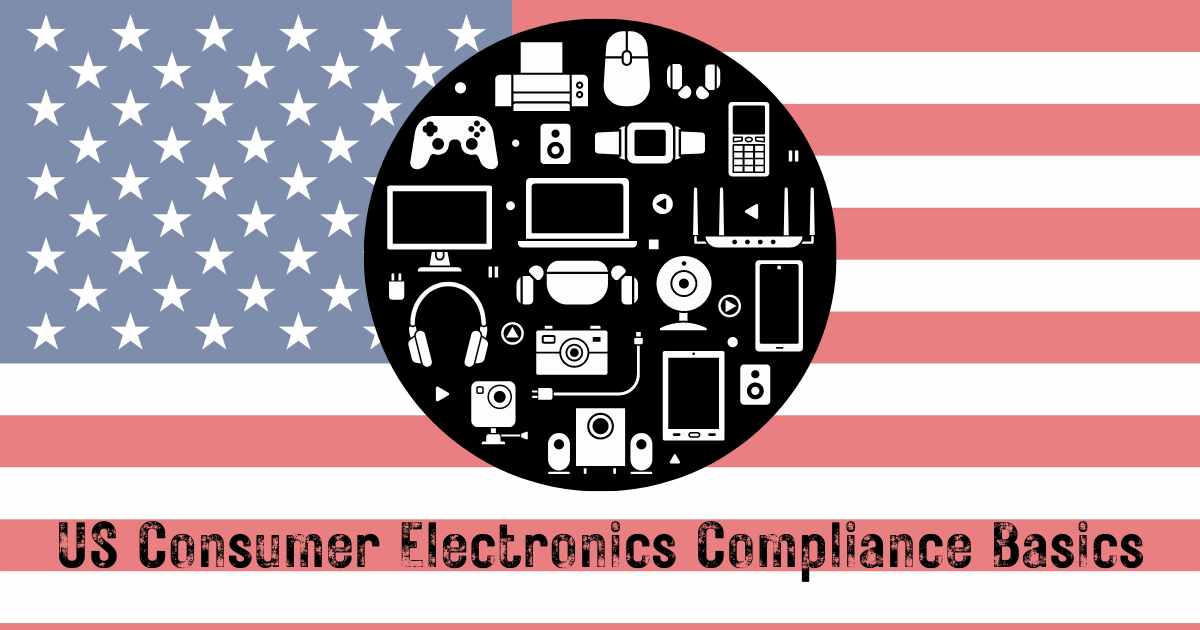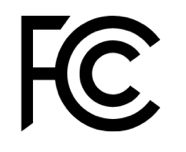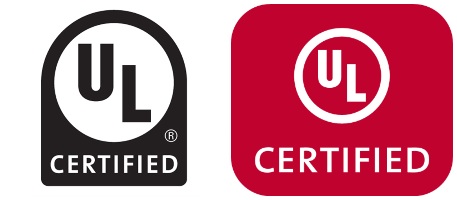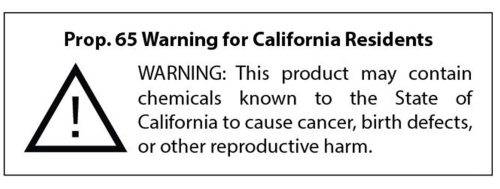
This is the first post in a series and this time is about US consumer electronics compliance testing and regulations. We’re going to start by focusing only on the basics you need to know for consumer electronics compliance requirements for the USA, namely the certifications you should know about, and then later we’ll discuss other countries and regions such as the EU, Asia, or Canada.
Importers must know how to be compliant and certified for the regulatory requirements of whichever country they intend to sell their product into, in this case, the most common regulatory requirements for the U.S. market. Some electronic products need to be certified in order to be sold in the USA. It’s very important to note that if your applicable product does not comply with these requirements, you will not be able to sell your consumer electronic product there.
For the U.S market in general you have three types of regulatory requirements and testing that need to be done:
- FCC which stands for Federal Communication Commission
- UL which is Underwriters Laboratories
- California 65 which stands for California prop 65.
FCC

FCC certification certifies that the electromagnetic compatibility and interference from the electronic product being tested are below the safe limits approved by the Federal Communications Commission. FCC rules and regulations come from CFR (Code of Federal Regulations) Title 47.
When it comes to FCC certification the FCC considers two categories of products.
- ‘Unintentional radiators’
- ‘Intentional radiators’
The difference between these two categories of products is that unintentional radiators may have some electronics inside of them, but they do not actually transmit or receive any kind of RF signals. An example most people own is an AC adaptor or LED lighting.
On the other hand, intentional radiators are products that do transmit or receive RF radio frequency signals. Wireless devices and smartphones are just two examples.
Some devices are exempt, however, because the frequency of the device must be more than 9KHz for it to require FCC certification. If the device is transmitting on a frequency less than 9KHz then FCC testing and certification are not required… this would be items like a fixed LED light on a battery, for example.
Also, the FCC may accept small quantities of ‘unintentional radiator’ products being put on the market (to test the market) without a certification, but generally, electronics will need FCC certification in the longer term.
Types of products that require FCC certification
Here’s a short list of consumer electronic products that must usually be FCC-certified:
- AC adaptors
- WiFi routers
- Smartphones
- Drones
- Smartwatches
- Home alarm systems
- LED bulbs and lighting
- PCs, laptops, and tablets
- Wireless earbuds
- RC vehicles and controllers
- and many more…
SDoC FCC: FCC certification for unintentional radiators
If you’re selling unintentional radiators then you or your supplier can apply for an SDoC (Supplier Declaration of Conformance) which is a document from the FCC that states that your product is not transmitting any RF signal. You can actually self-issue this if the ‘responsible party’ is located in the USA.
In order to apply for the SDoC the responsible party (supplier or someone from the supplier’s party, for example, it could be a vendor or a distributor), needs a physical representative/distribution office in the USA. If you do not have an office and anyone present there, it’s still possible to gain FCC certification, but you’d have to go through the full certification process.
‘Full’ FCC: FCC certification for intentional radiators and unintentional radiators without a US presence
A full FCC applies for intentional radiators (or those with no US presence as mentioned above) and in those kinds of situations you can’t self-issue this certification, it has to come from the FCC once you have tested the product/s through an FCC-approved laboratory. Once they have tested and certified that the product meets FCC requirements then this FCC-accredited lab will issue the FCC certification and FCC ID. The FCC ID is much like a serial number and this serial number will be registered at the FCC website so it is possible to visit and search for FCC certified products and manufacturers.
UL

UL stands for Underwriters Laboratories (now UL Solutions) and it’s a safety and reliability standard for consumer electronics compliance in the USA. There are numerous UL standards, for example, UL 1642 is the standard for assessing Lithium-ion batteries.
One important thing about UL testing is that it is not mandatory, so in a few cases manufacturers and suppliers may choose not to do it, however, if your product is for children and babies or could be a safety hazard in any way, such as if it includes lithium-ion batteries, a power supply, or could injure people if it is crushed, broken, or damaged, most retailers such as Amazon, Walmart, etc, simply will not accept products that aren’t UL tested and certified. For example, an electronic device that plugs into an AC outlet could be hazardous to users, so in this case, UL certification is more or less a requirement for importers looking to sell them into the USA.
Since most consumer electronics fall into the above category, it’s basically essential to comply with UL for manufacturers of them planning to sell in the USA, so it’s a case of deciding which UL standard/s you need to test to and using an official laboratory to carry out the testing.
California Prop 65

California Prop 65 is really only for the state of California so if you don’t intend to sell your product in California you don’t have to comply with it. CA prop 65 is about compliance with or identifying what kinds of hazardous and toxic materials (especially those that are carcinogenic, cause birth defects, and reproductive harm) are in your product. As long as you can both state those toxic and hazardous materials and show that they’re below the level recommended by California law then you’ll have no issues selling in California. Obviously, a certain amount of supply chain transparency is going to be required to obtain this information.
Businesses are commonly less familiar with Prop 65 than other similar regulations such as RoHS (for the EU), so if your product is compliant with RoHS this would be a similar process as for Prop 65 which also tests for hazardous materials.
Note: Companies with fewer than 10 employees (including both full and part-time) are exempt from Prop 65 requirements (at the time of writing in Dec 2022). If you are selling in small quantities to different customers you may simply state that this regulation is not applicable, but large retailers may still demand compliance as a condition of purchasing from you because they will not want to bear any responsibility should your product cause a hazard.
When should you do compliance testing?
We’re often asked when the right time to do compliance testing is.
The best time to do it is when you have just completed a prototype that has met all your functional requirements and with a ‘locked’ design. This final prototype uses final production materials, parts, and processes and is ready to be mass-produced. This is important because once production starts you’ll be producing the product in the hundreds if not thousands per day and you don’t want to have any kind of compliance issues after you have already produced a large number of products (this would lead to production being stopped, re-testing, changes to the product, and maybe even an expensive product recall).
So, the best time to test for US consumer electronics compliance is at the end of your design and development process when you have a production prototype that is the same as the mass-produced products that will be on the shelves.
How long does it take to do the tests?
Manufacturers of a new product always want to know how long it takes to do these tests. That’s understandable because they are trying to understand the timescale before they can manufacture and ship the products.
FCC, UL, and CA Prop 65 testing will generally take from around three weeks minimum to a month in some cases depending on how complicated/large your product is. For example, a large power storage system has many different components in it, inverters, etc. Testing products like this will take much longer, we are talking in the order of two to three months in some cases.
How much does US consumer electronics compliance testing cost?
We’ve introduced FCC, UL, and California 65 testing to you already, and if you’re planning to sell consumer electronic products in the USA you probably need to do all of them, but how much could this cost?
- SDoC FCC
The cost of getting the SDoC FCC is actually considerably lower in cost than the full FCC ID test. It’s going to cost in the order of thousands of dollars. - Full FCC ID
The cost of obtaining the FCC full FCC ID is in the order of tens of thousands of dollars and it all depends on the complexity of your product and how many different kinds of tests need to be done.
- UL testing
UL testing for safety has similar costs to the full FCC ID. If you have a very complex product it could cost tens of thousands of dollars and maybe even run close to six figures, but if you are only testing a small and simple device it could be anywhere from a few hundred dollars to a few thousand. - California Prop 65
California Prop 65 is not that complex and this is reflected in its testing cost. Basically, you’re taking a piece of all the materials used in your product, grinding them down, and testing them for hazardous substances. Again, the complexity of the product affects the cost, because if there are a great many materials used or if your product is huge, of course, it would be very expensive, but for a typical size consumer electronic product, the cost can start from a few thousand dollars.
To do these tests in the first place you must submit functional samples (we discuss how many samples are needed here) that meet all the specifications and are a typical example of a manufacturing unit. These are also a cost to your business.
That means that you shouldn’t pick and choose perfect samples. You should choose samples that are representative of what the production samples will be like randomly because you’re only fooling yourself if you pick the best ones for testing and later find some failures in production because ‘the best’ was, in fact, not representative of the products.
Conclusion
In general, US consumer electronics compliance will require regulatory certification from FCC, and you will also probably need to comply with UL and CA Prop 65 in order for you to sell your products there.
In the USA if you have an electronic product that emits intentional radiation, such as many IoT and wireless products, you’ll certainly need to fulfil FCC requirements and if it’s possible for the product to cause a safety hazard, complying with UL will also be a must (and since most products importers into the USA will also be sold in California as well as other States, complying with Prop 65 and showing that levels of hazardous materials are in safe amounts will also be needed).
Before completing the development phase of your new products, you should understand what compliance testing is mandatory or otherwise because if you don’t have the right declaration of conformance and compliance documentation, US customs will not likely allow you to import your products into the US.
*****
If you have any questions about certifications and regulations, let us know. We will try to help you. More posts will follow where we dive into certifications for different countries and regions and go into more detail.
Disclaimer…
We are not lawyers. What we wrote above is based only on our understanding of the regulatory requirements. Agilian Technology does not present this information as a basis for you to make decisions, and we do not accept any liability if you do so. Please consult a lawyer before taking action.



